
What comes to mind when hearing the name Vienna? A sense of classic Empire? The capital of Austria? Or perhaps a “City of Music”? As for me, whenever I recall Vienna, the first word coming to my mind is “aristocracy”. Vienna first and foremost is adorned by an aristocratic sense of style and music: Johann Strauss, Waltz, eternal “Waltz of the flowers” twinkle in my ears, when a theme about Vienna goes on.
Lying on the banks of Danube River, Europe’s Cultural Capital, Vienna is a city with an exquisite taste, charm and home to numerous great composers and musicians, like Haydn, Schubert and of course Johann Strauss with his magnificent waltz “Blue Danube”. Not by a chance, Vienna is likewise called a “City of Music”.
As a true amateur of the waltz, the City of Music has embraced me in its arms twice in my life. My first meeting with Vienna was more organized as compared to the second one, as the second time was somehow a transitional visit: I spent only eight hours in Vienna, in between flights. Even though it was winter, but not severe one and though mostly rainy rather than snowy… However, the weather conditions were not there to impede the enjoyment of the only eight hours I spent in Vienna.
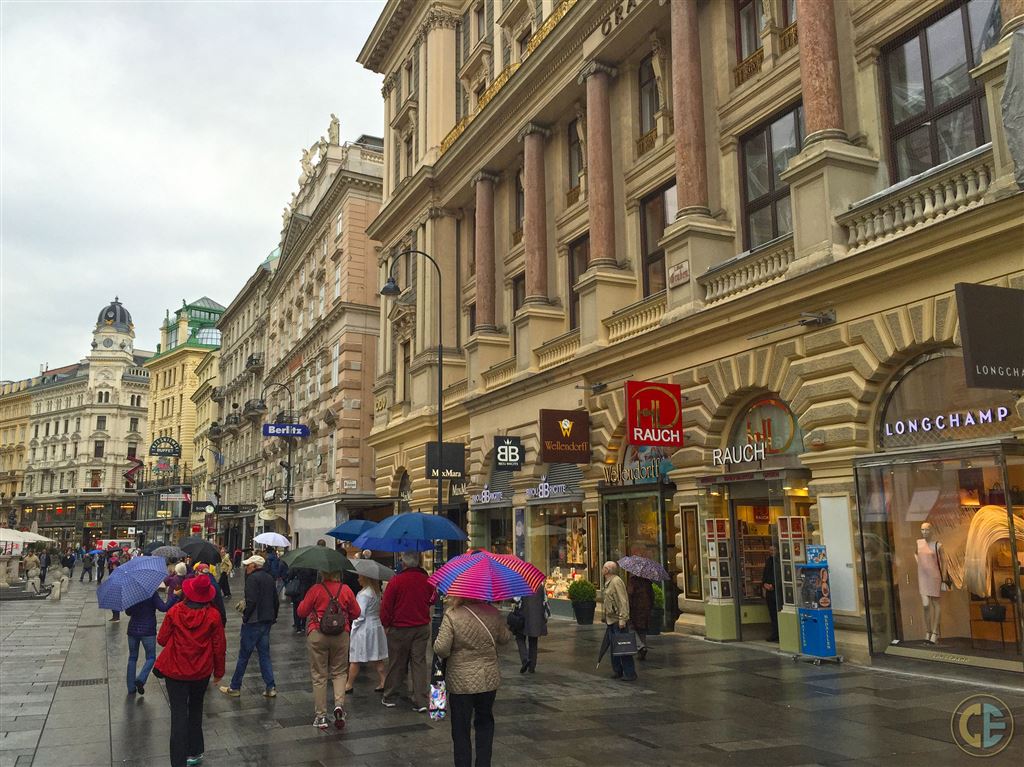 A Rainy Day in Vienna
A Rainy Day in Vienna
The first time I traveled to Vienna was realized through a Eurolines bus. It was September evening, the bus from Frankfurt departed to Vienna and was supposed to arrive there early in the morning. After a bit of tiresome trip, I found the Hostel where I was going to stay. Centrally located, the Hostel provided a chance to explore the city by foot. The name of the Hostel was as sweet as its ambiance - “Strawberry”.
As you may know, the major part of Vienna’s landmarks is located on the Ringstrasse- a circular road surrounding the Inner Stadt district of Vienna, which was officially opened by the Emperor Franz Jozeph on May 1, 1865. Ringstrasse is one of the most enchanting boulevards in the world, where you can see the most important monuments and sights of the city. A very joyful way to have a glance at the area surrounding the Ringstrasse is by a tram: that is what I did as soon as I reached the boulevard; I took a ride on the tram and was delved so deeply into the pleasant trip that was unable to note how the tram made two circles instead of one around the Ringstrasse.
After a tram ride full of fun, I walked to one of the most impressive buildings of Vienna- the Opera House, dating back to the middle of 19th century. Initially, the Opera House was named as Vienna Court Opera (Wiener Hofoper). Later on, when the Habsburg Monarchy was replaced by the First Republic of Austria, it was renamed to Vienna State Opera. Remark: if you want to have a double fun filled with delights of classical music, visit the underground toilette next to the Opera House. Obviously, Austrians have an exquisite taste and thoroughness in everything: even the toilettes look and sound aristocratic:) A Brief History of Schönbrunn Palace (House of Habsburgs).
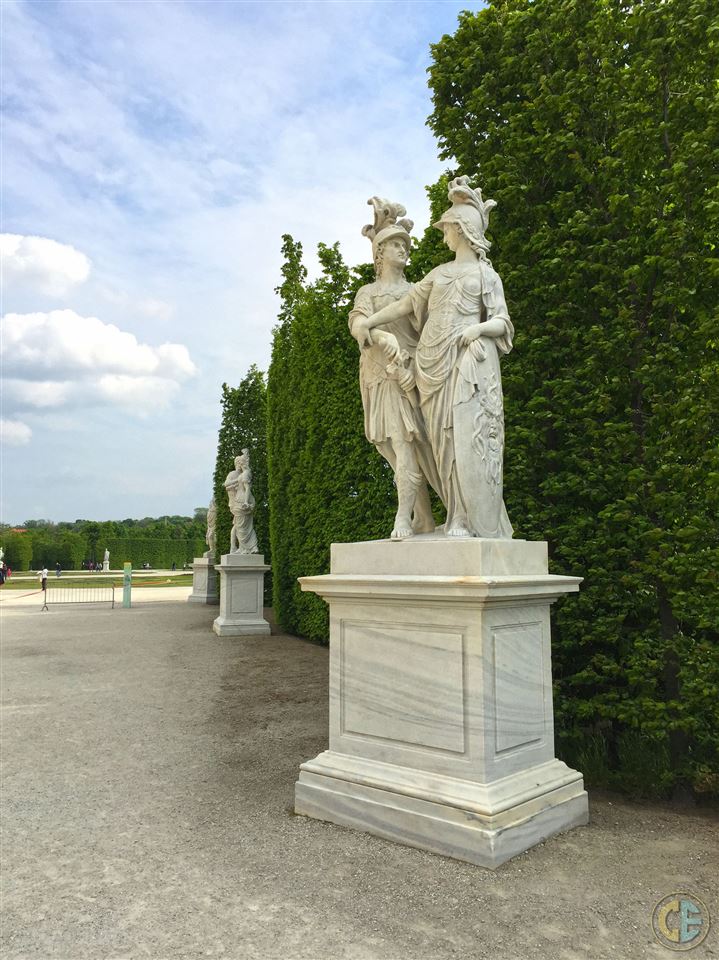 Statues on the Gardens of Schönbrunn Palace
Statues on the Gardens of Schönbrunn Palace
Following a natural flow of tourists, I found myself walking along the alley that took me till the symbol of Vienna, the Stephansdom; a Gothic Cathedral from the 12th century. In this very cathedral, Mozart’s wedding was celebrated in 1782. The imposing and somehow severe construction is as high as it seems it is reaching till the sky: the south tower is the tallest one, which is around 136 meters high. As advised before, I climbed up the tower to watch a magnificent view of the city. What I saw was all-encompassing scenery from the bird’s eye view… It seemed as if the towers in front of the Cathedral, the roofs of the buildings were playing a game of height, a sort of competition to see which one is higher and more imposing. What especially caught my attention from this view was the mosaic art on the adjacent tower.
The scenery ahead pointed out at the sites in front and prompted me to continue my way towards the former imperial residence-the Hofburg Palace, where the famous Habsburg dynasty had previously lived. This majestic construction is nowadays an official seat of Austrian President and is one of the biggest palaces in the world. In the same Palace, you will find a splendid museum - Sisi Museum, which houses a list of personal belongings of Empress Elizabeth and her beautiful portraits. There is a very attractive site in the same area: if you are fascinated by horses the way I am, the Spanish Riding School at Imperial Palace will please your heart. Designed in exquisite Baroque style, the school is an idyllic stage for a horseback riding art. In order to enrich your artistic intellect, there is a very important museum close by that is worth visiting - Albertina, which I missed regrettably. Albertina Museum has a world-renowned largest graphical collection that you can ever see in the whole world. Hence, it is especially advisable to pay a tribute to this museum.
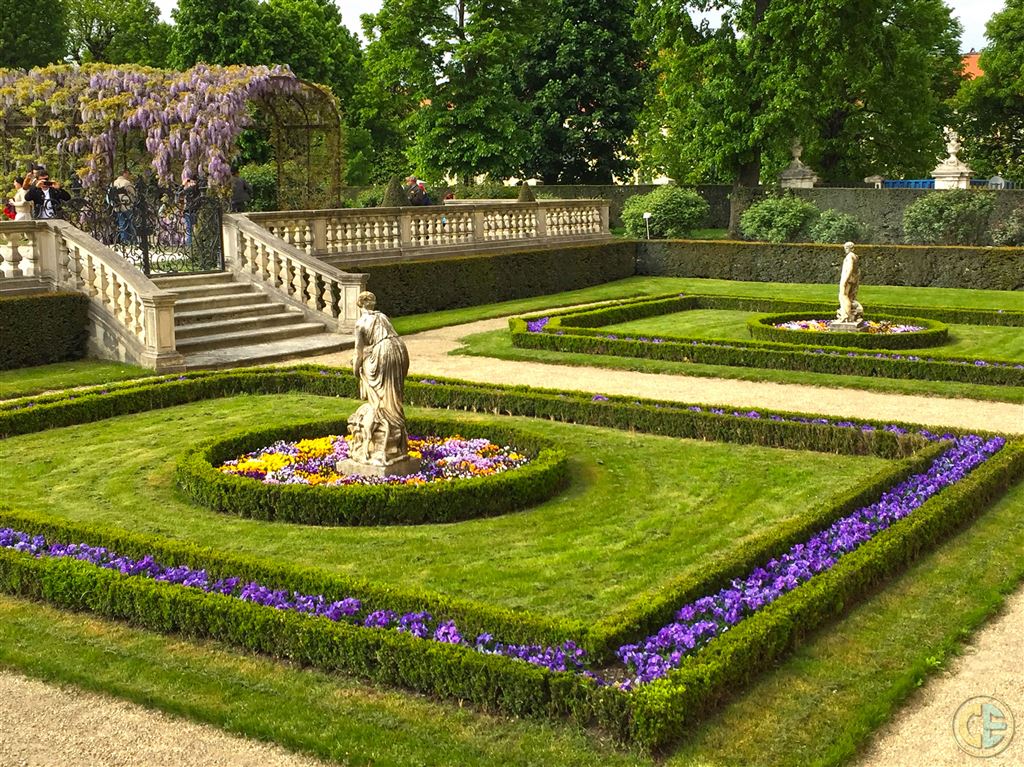 Schönbrunn Palace Gardens
Schönbrunn Palace Gardens
To get a taste of imperial culinary culture and to learn the art of court dining will become possible through a glance at the Imperial Silver Collection.
The territory in front of the Palace was crowded. However, it was still possible to rejoice in the beautiful royal ambiance for a while…
After getting a feel of the royal atmosphere, I wished to relax in a pure green and found myself in Burggarten. The garden is an important site for Mozart lovers, where you can rejoice in the enticing green of the park and observe the marvelous statue of the world-famous composer Wolfgang Amadeus Mozart (of course, you may find the green in summer, beginning of autumn or end of spring, not in winter).
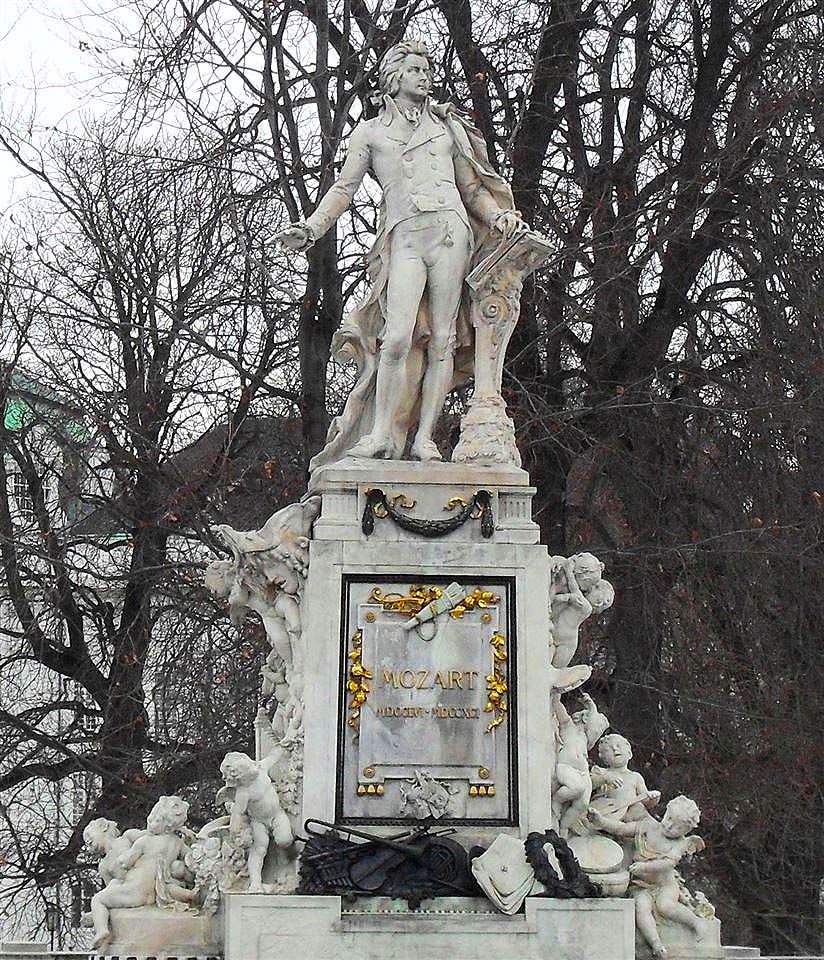
In this very park, you will find another piece of aesthetic beauty- the Butterfly House: built in art nouveau style, it houses more than hundreds of tropical butterflies.
As a shout of greenish relaxation, I continued my way and found another piece of natural heaven the Stadtpark: a charming park filled with meadows, flowerbeds and a large pond. I was pleasantly surprised when I encountered such a large number of monuments to eminent composers and painters, including a monument to Franz Schubert, Hans Makart and Johan Strauss. Later on, I discovered that the Stadtpark is the richest park in monuments and sculptures in the whole Vienna. I strolled through the park for a while, and then took a photo in front of the sparkling golden monument to Johan Strauss. The monument was opened to the public on 26 June 1921. On this occasion, the Vienna Philharmonic Orchestra played the Blue Danube Waltz, composed by Strauss. Whenever I recall my trip to Vienna, the splendid monument of Strauss immediately appears in my imagination. On my second visit to Vienna, I made another tribute to maestro’s enticing monument. Though it was winter, the monument was shining as always.
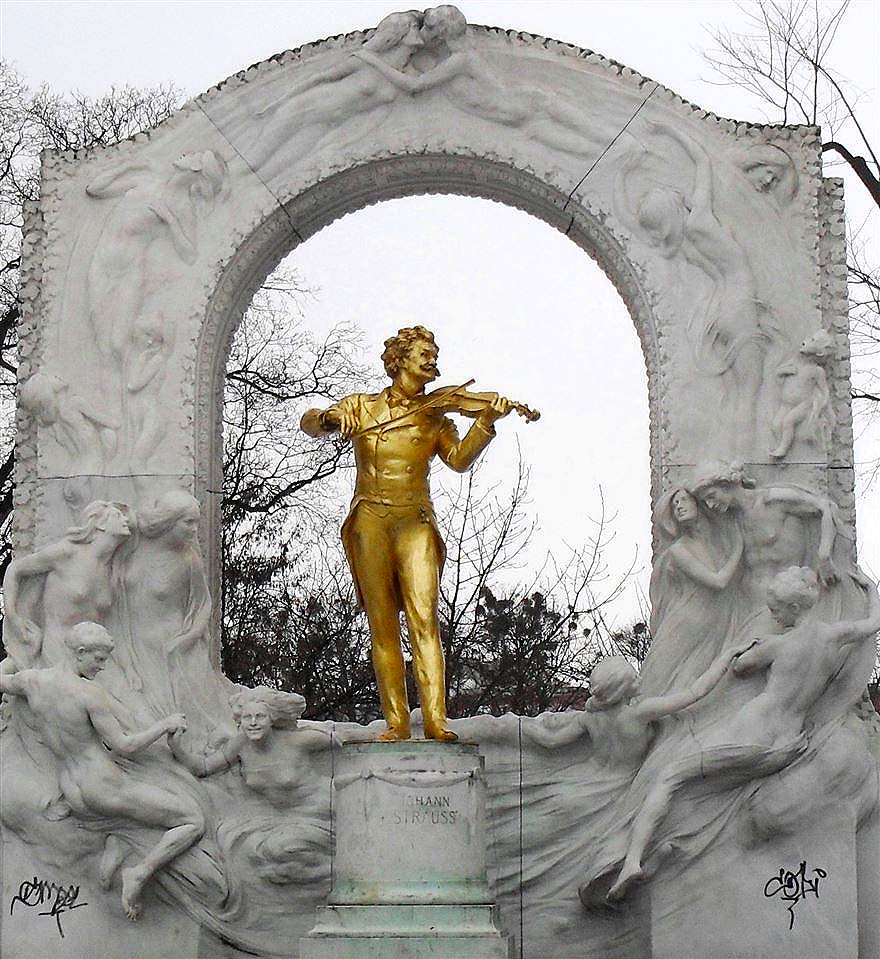
My two trips in two different seasons have shown me that Vienna is filled with elegance and aristocratism and is rich in endless sites of interest, no matter which time of the year it is. When visiting the Austrian capital, make sure to invest enough time on each of those landmarks. After all, a surfacing glance will impress your imagination, but seriously exploring Vienna will tell the story of the grand Empire that left a powerful trace in the history.